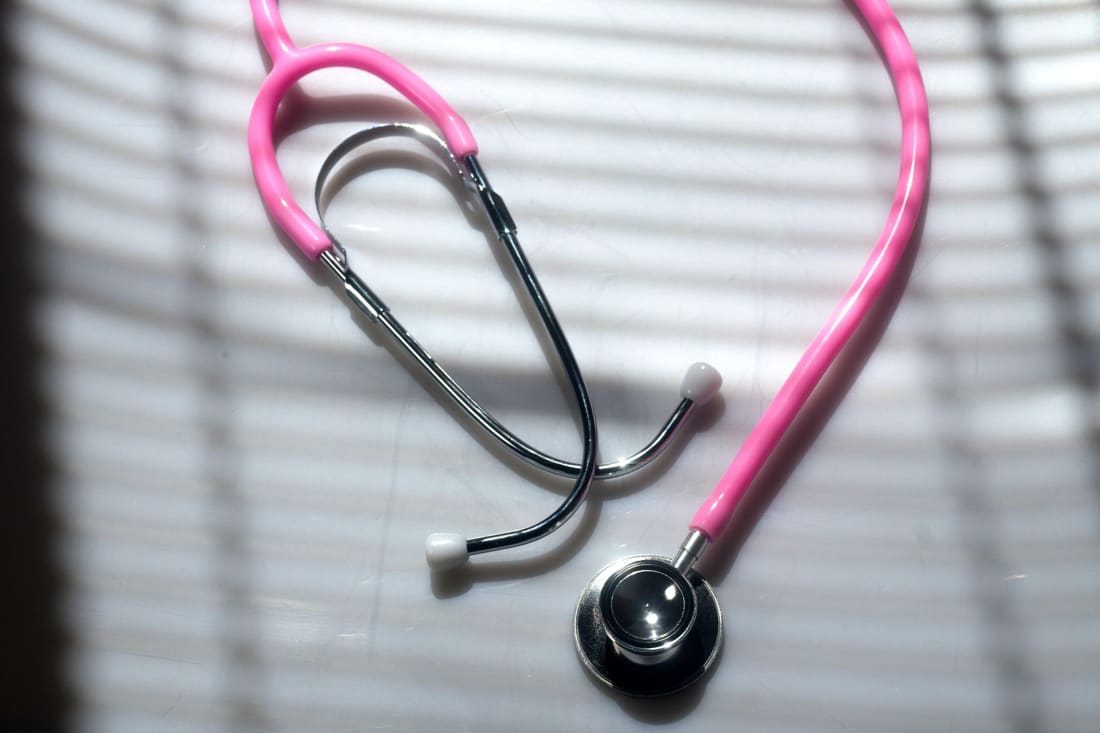Health check: what is endometriosis?
Battling misinformation and bringing you expert advice this is EYKTK about endometriosis
Battling misinformation and bringing you expert advice this is EYKTK about endometriosis
In the U.K alone, endometriosis affects around 1.5 million women and those assigned female at birth, causing debilitating pain and fertility issues. Celebrities such as Alexa Chung, Molly-Mae and Lena Dunham have recently opened up about the condition too. On average it takes 7.5 years to diagnose, causing a lot of women to feel misunderstood and unheard.
But there is hope for change. In fact, as of March 2023, the UK has launched a new clinical trial testing a potentially revolutionary drug, named dichloroacetate, which would make history as the first non-hormonal, non-surgical treatment for endometriosis. Researches hope it will help to relieve pain-related symptoms of those who live with the health issue and increase access to treatments that carry less risk of side effects. If successful, this would be the first new drug made for those suffering with the condition in 40 years.
Below, we speak to experts and hear from someone diagnosed with endometriosis to learn more about what endometriosis is and how it’s treated.
What is endometriosis?
To begin, let's clear up any misconceptions. Endometriosis is not an infection, it’s not contagious nor is it a cancer. It is a disease where tissue similar to the lining of the uterus grows outside the uterus; these are called endometrial implants.
Commonly, endometrial implants are found in the pelvis or in the abdomen but they can be found elsewhere, such as in organs like the ovaries. Each month, cells react to the menstrual cycle - building up, just like womb lining does when it is within the womb, and then shedding. However, there is no way for this tissue to leave the body which can cause inflammation, pain and the formation of scar tissue and cysts.
Currently, there is sadly no cure for endometriosis and the main aim of treatment is to help control and maintain symptoms. Currently 190 million women of reproductive age have the condition worldwide. This can affect anything from the uterus, bowel, bladder, ovaries, appendix and fallopian tubes but on some rare instances it can spread further.
Endometriosis symptoms
Endometriosis symptoms can vary from person to person. Pain can be felt any time from during ovulation, before/during or after menstruation and may be located in the pelvis, when passing urine, during bowel movements or during sex. Other signs could be the heaviness or irregularity of bleeding, bloating and tiredness during the menstrual cycle.
Due to sexism in clinical and medical settings, as well as in a more general social sense, some people report struggling on with endometriosis without accessing or attempting to access any form of medical interventions.
“It can be difficult to differentiate between ‘normal’ periods and ‘heavy or painful’ periods as there is often no objective way of comparing. A lot of women just put up with that time of the month and are told to get on with it," says gynaecologist Mr Narendra Pisal. "However, if you have to put your life on hold for those few days or if your sex life is affected by pain during sex [something which is termed 'dyspareunia'], it is time to take note and ask for some tests."
Endometriosis diagnosis
A study by BMJ concluded that 60% of women will currently ‘see three or more clinicians before getting the right medical diagnosis’.
“A GP’s job is quite difficult as they have to cover consultation, examination, tests, assessment and referral if necessary in around ten minutes. So, it is best to be armed with all the information. In this case, it will be useful to have a diary of your menstrual cycle with particular emphasis on heaviness, pain and any other symptoms with a system for indicating severity. Also note down if you have to take painkillers and how many. If the symptoms are affecting your life and you have to take time off work, that is also a significant factor," advises Pisal.
Endometriosis treatments
Currently, there is no way to prevent the growth of endometriosis which is why many women and other people with wombs undergo multiple surgeries as a way to treat endometriosis as it advances and then regrows post-surgery.
Apart from surgery, many doctors offer hormone treatments as a way of managing endometriosis symptoms. Hormone treatments could be anything from the mirena coil, the combined oral contraceptive pill or testosterone derivatives. These can help put women and other people who experience endometriosis in an artificial pregnancy or menopausal state.
This means that the menstrual cycle is artificially halted, pausing the growth and shedding cycle of endometrial tissue. “Endometriosis is known to get better during pregnancy and after menopause as there are no periods. Medical treatment of endometriosis is often based on mimicking these two physiological conditions through medication,” explains Pisal.
It is important to thoroughly discuss these options with your medical team, as not all states caused by hormone therapy will be reversible.
Other than strong painkillers which may be prescribed by your doctor, some women and non-binary people find comfort from the use of a TENS machine. This is a device where electrical currents pulsate into the body, blocking pain messages.
Endometriosis surgery
Endometriosis surgery may comprise of a laparoscopy, also known as keyhole surgery can be completed in order to diagnose and destroy the endometriosis. This is a procedure whereby a tube with a small camera and light souce is inserted into your abdomen via an incision next to the belly button. Your abdomen will then be filled with gas. This is in order to see inside the pelvic region and determine if endometriosis is present.
Whilst transvaginal scans and ultrasounds can determine growths or cysts, they cannot see the tissue growth which is why the procedure needs to be done in order to definitively diagnose endometriosis.
Surgery to remove endometriosis will involve the same tools and tissue affected by endometriosis will be cut away in an excision in order to free the affected areas. Surgeons might also choose heat or laser to destroy the growths, too.
Depending on the severity of the growth, some organs like the bowel and bladder can also be affected which might lead to a longer and more complex surgery which will be discussed with you beforehand.
The good news is that this type of surgery is considered to be less invasive than other forms of open surgery, leading to shorter hospital stays and recovery times in many cases. It's often carried out under general anaesthetic - which does carry risk factors, which you should discuss with your medical team - but this means you won't feel the incisions being made.
What is having endo like?
Reading about symptoms on a page can obscure what the reality of living with a condition can be like. In order to discover the truth about endometriosis and what the condition is like, we spoke to someone who has experienced the condition for the past 15 years.
“From the age of around 11 or 12, when I first got my period, I used to be in excruciating pain. I started having to take days off school because it felt like my insides were being ripped out," recalls Fay, 27, from London. "I was put on the pill to help with the symptoms before I was even sexually active but it wasn’t until I was 21 I was finally given a laparoscopy."
Fay's journey has been long - but she judges the overall outcome to be positive. "I was in surgery for nine hours and actually had cysts everywhere and lots of organs were stuck together. I’ve now had three surgeries, but there is light at the end of the tunnel: I managed to get pregnant last year without trying," she says. "I feel very lucky and blessed that I was able to become pregnant and I don't think that would have been possible without the surgeries.”
However, despite this, her experience with endometriosis is ongoing. “I’m still dealing with endo pain now: I have sore bowel movements, painful sex, extreme chronic fatigue, brain fog, and many other symptoms," she explains. Being pregnant didn't completely alleviate her symptoms either. "Even during pregnancy, I suffered with endo pain."
From her experience with endometriosis, she has developed a range of self-help techniques. "I treat myself holistically and naturally and follow a vegan lifestyle, which I think really helps," she shares. "I’m doing everything I can to naturally try to alleviate some of the pain associated with endometriosis, but I have also accepted that it will never truly go away."
Overall, Fay hopes that creating awareness of endometriosis can help people like her who are struggling with endometriosis. "There are so many misconceptions and theories about endo, it can sometimes be really hard to feel like you are being taken seriously."
Endometriosis 4 stages
Endometriosis is normally referred to in stages in order to help understand how much it is impacting the body: minimal (Stage I: 1 to 5 points), mild (Stage II: 6 to 15 points), moderate (Stage III: 16 to 40 points) and severe (Stage IV: more than 40 points).
The concept of endometriosis "stages" was formulated due to the varying symptoms and symptom severity which have been presented in clinical settings by patients with the condition. The above system of classification was formulated by the American Society for Reproductive Medicine and also corresponds with a numerical system for quantifying the number of endometriosis lesions.
As you advance through the points system, the number of implants, scarring and cysts increases. Individuals experiencing few superficial implants will likely be classified as Stage I, more implants which are more deeply rooted are associated with Stage II, small ovarian cysts, filmy adhesions (this is where organs may be "stuck together" and is reported to be extremely painful in most instances) and many implants are linked to Stage III, and large ovarian cysts, many deep implants and many dense adhesions are thought to typify Stage IV.
Cysts on the ovaries, associated with Stages III and IV, may be referred to as endometriomas: a form of cystic lesion filled with dark brown endometrial fluid that may be also be colloquially called "chocolate cysts."
Further resources and where to seek help
Currently, there are no completely non-invasive ways to determine if someone has endometriosis - but there is hope on the horizon thanks to new technology. In April 2022, researchers from Oregon Health & Science University and Oregon State University published their findings that nanotechnology could actually help find and treat the condition.
Nanotechnology works with the use of Iron oxide nanoparticles (about 1/1000th the size of a speck of dust). When injected, they can cling in ‘tissue lesions’, helping them to be identified whilst using imaging devices. After being exposed to a magnetic field, the temperature of the particles can soar to more than 120 degrees Fahrenheit. This would be hot enough to remove the lesions via heat then with the use of surgery.
In the meantime, if you believe you might have endometriosis or have any of the symptoms, speak to your GP immediately. Further information and help can be found via Endometriosis.org, Endometriosis UK and Endometriosis Association.



